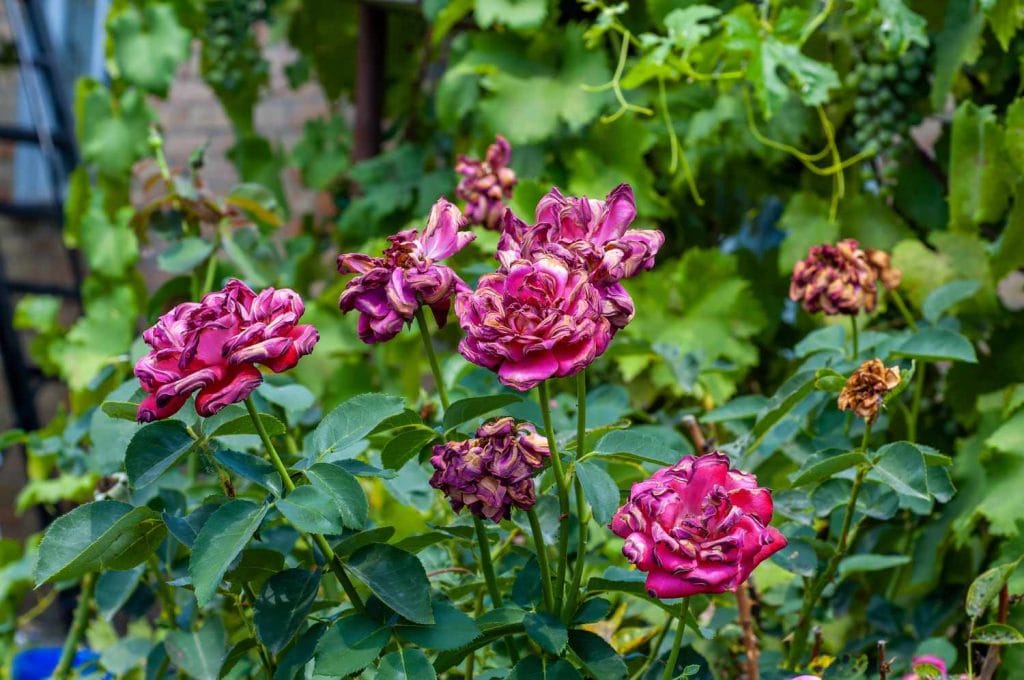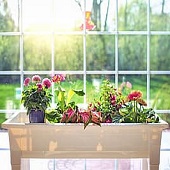
:max_bytes(150000):strip_icc():format(jpeg)/GettyImages-2163185924-87020bdb093a49dbbedebbc6a7bcff5c.jpg)
We all know the results when we forget to water: A shriveled, brown, crunchy plant or a sad collection of dead sticks in cracked soil. Fortunately, our plants send out signals long before this tragedy occurs. There are many indications that you are underwatering your plants that apply to both indoor plants and outdoor plants in the garden. If you’re wondering whether you need to water your plants more often, here are some lesser-known signs of underwatering to watch out for.
Faded Leaves
Leaf color often begins to fade on a thirsty plant. If you notice a plant’s leaves turning dull, check the soil more regularly for moisture and water as needed. Without intervention, leaves will eventually drop or turn brown.
Note that leaves on an underwatered plant may have a yellow tint, but bright yellow leaves often indicate the opposite problem: too much water. Yellow leaves can also signal a lack of nutrients or a problem with the soil.
Getty Images
Brown, Crispy Leaf Margins
Before leaves turn completely brown, they often get crispy along the edges. This is a sign of underwatering, though other factors may also be in play. Too much sun exposure can cause both indoor and outdoor plants to scorch on the leaf margins. A dry home can also cause this problem with houseplants that require high humidity.
Rolled Up Or Puckered Leaves
Wilting leaves are a very recognizable sign of underwatering, but this can look different on various plants. Some plants’ leaves roll up when under stress. Rolled leaves could be from a lack of moisture, but they may also indicate other issues, like disease, overwatering, or frost. So, if you notice rolled leaves, also look for other signs of underwatering, like faded or brown leaves and dry soil.
When succulents start to lose water, their thick leaves will pucker or look wrinkly. Both underwatering and root rot from overwatering can cause this problem, so check soil moisture and adjust your watering schedule as needed.
Shedding Leaves
Plants may drop leaves when they don’t receive enough moisture. This can occur even before the leaves die as a measure of self-protection. Other issues can cause leaf drop, so check for waterlogged soil or signs of pests or disease.
Dropping Buds And Flowers
An underwatered plant may put off flowering and fruiting while focusing on staying healthy. If you notice flowers dropping prematurely or not appearing at all, this could mean your plant needs more moisture. This can also happen due to a heatwave or frost (or because your plant only flowers during a specific season). Your plant may resume flowering once conditions improve.
Slow Growth
If you’re in the middle of the growing season and a vigorous plant stops growing, it may need more water to encourage new growth. However, remember that this is a natural development when plants prepare for winter.
Pest Infestations
A stressed, dehydrated plant is more likely to be attacked by pests. Especially those that thrive in hot, dry weather, like spider mites. Make sure your plants are receiving enough water, and treat serious pest problems with neem oil or insecticidal soap.








